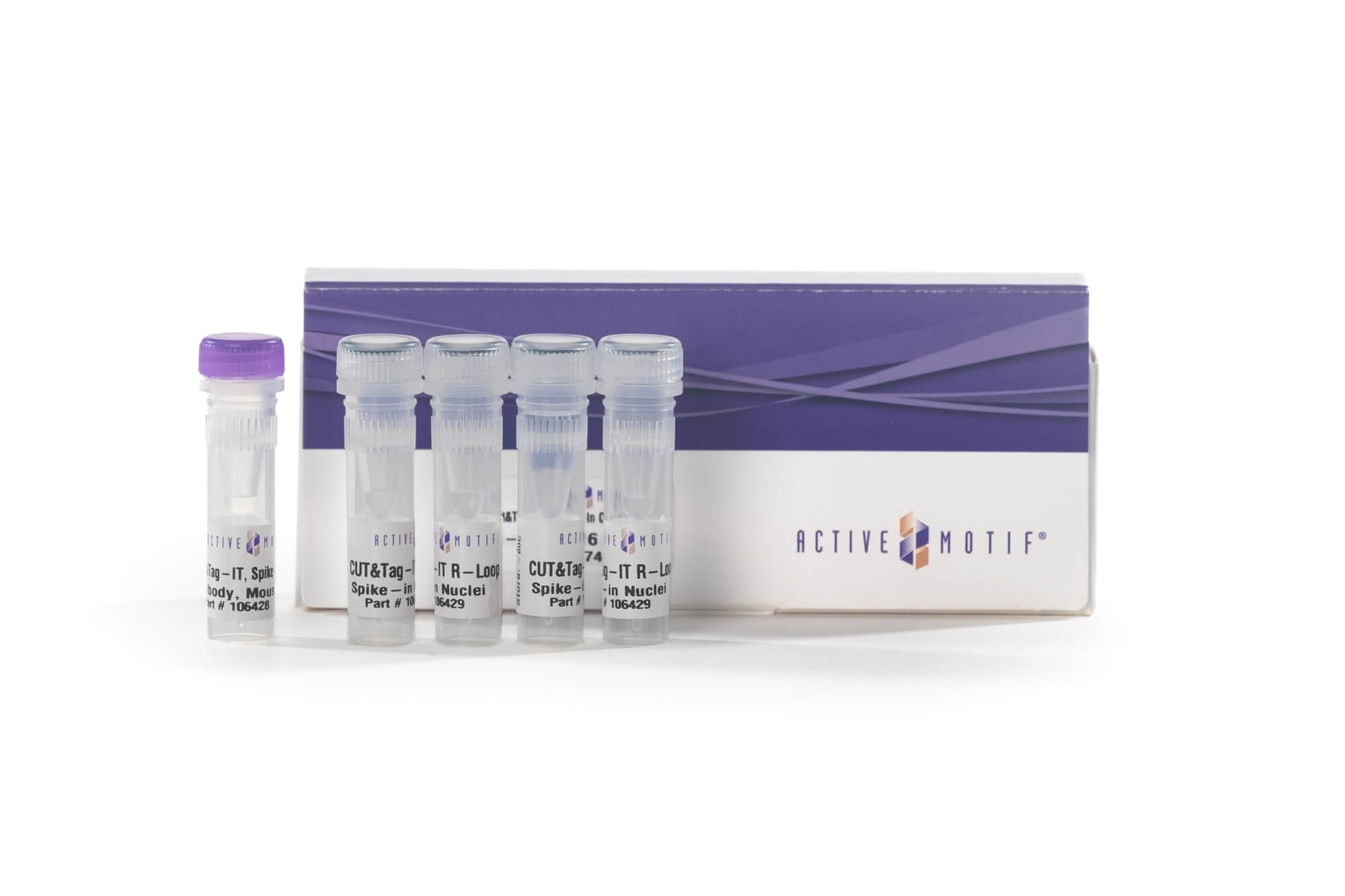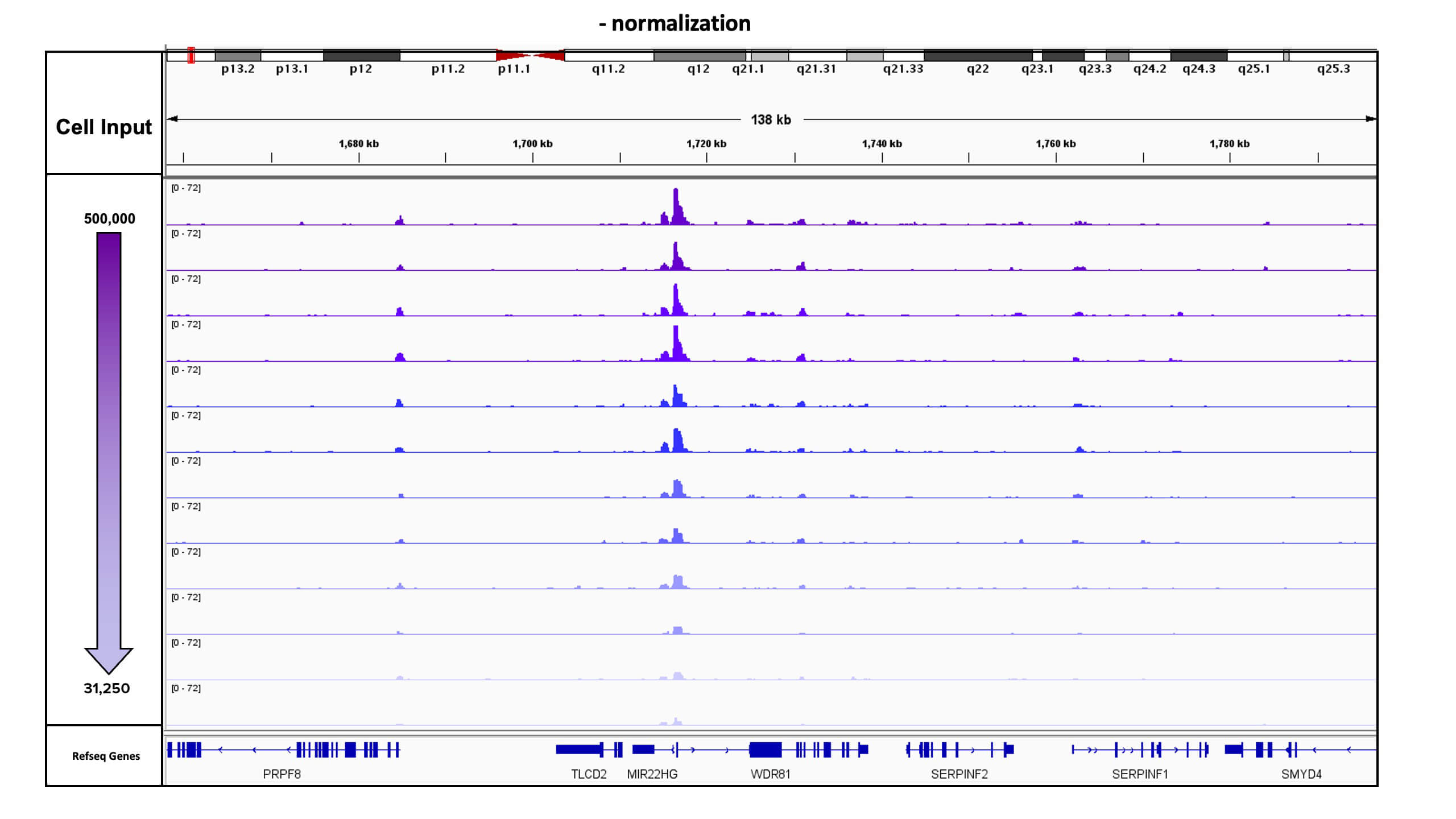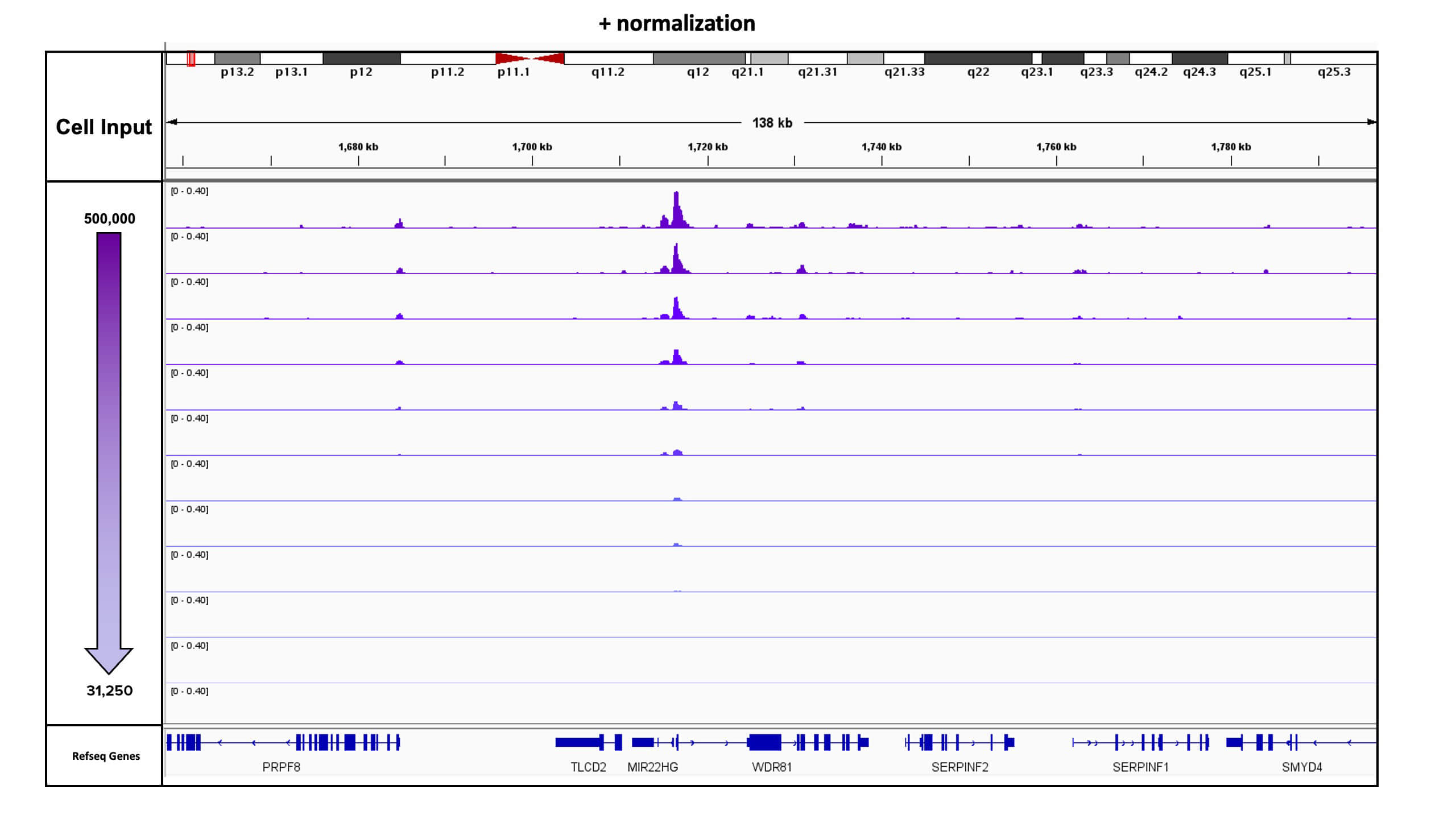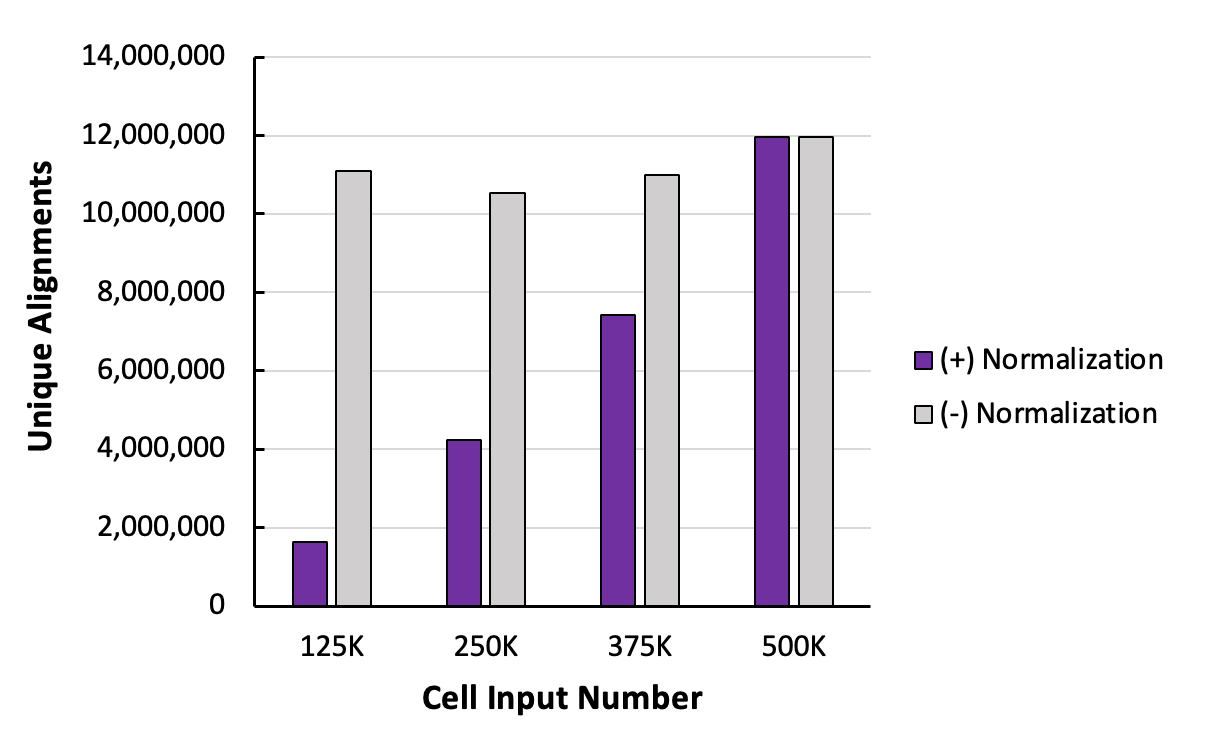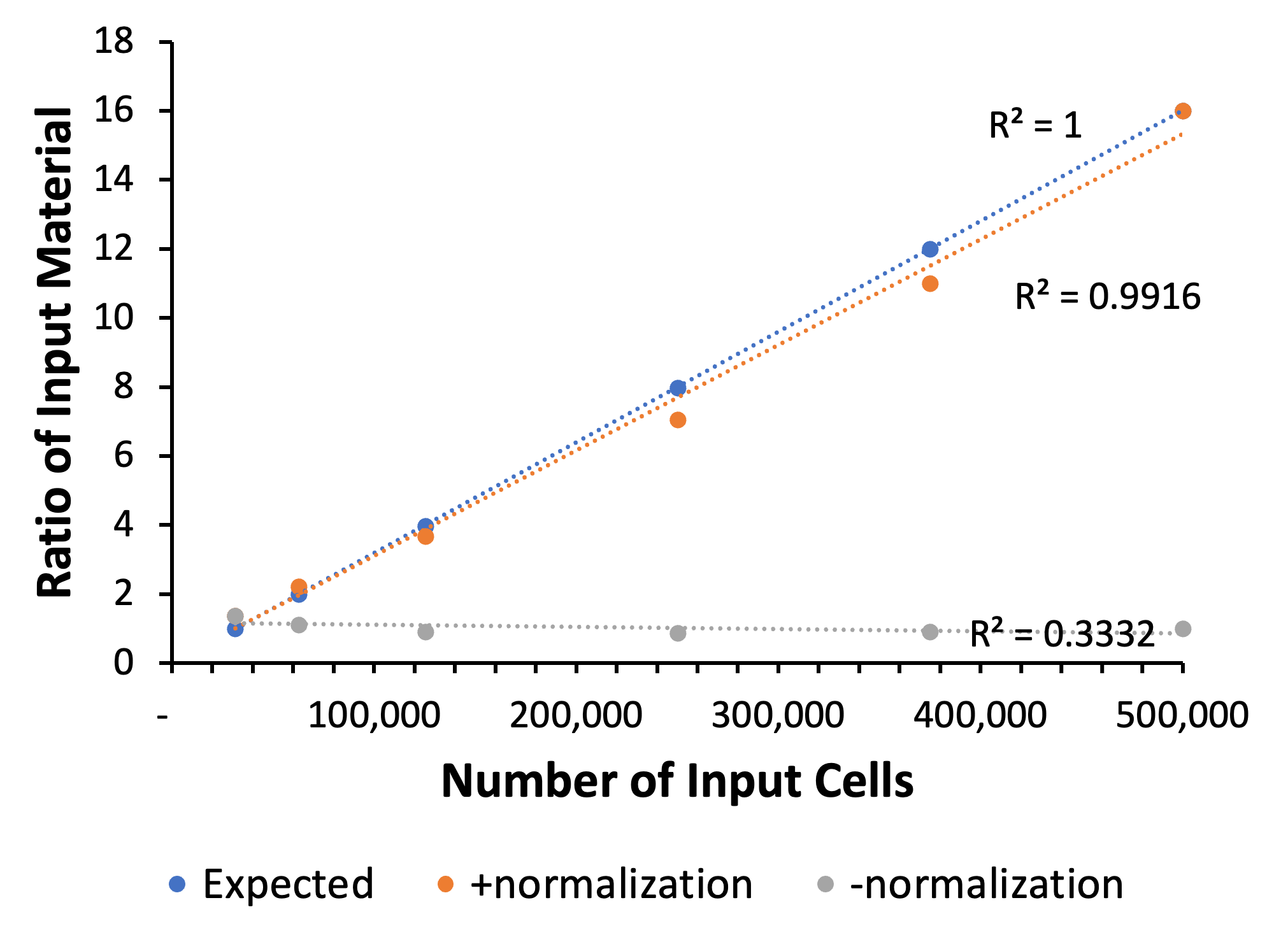CUT&Tag-IT® Spike-In Control, R-loop Overview
Cleavage Under Targets and Tagmentation (CUT&Tag) has emerged as a powerful method for profiling the localization of histone modifications of interest genome-wide. Active Motif applied this approach to study DNA-RNA Hybrid R-loops genome-wide with our CUT&Tag-IT® R-loop Assay Kit. The CUT&Tag-IT® R-loop Assay Kit utilizes a CUT&Tag-based approach to profile R-loops genome-wide using a specifically optimized protocol for cell samples and our DNA-RNA hybrid (Clone S9.6) antibody.
Due to variation in cell numbers and NGS sequencing statistics between samples, biological differences can be obscured. By applying Active Motif’s CUT&Tag normalization strategy to the CUT&Tag-IT R-loop Assay data, true differences between samples can be revealed.
CUT&Tag-IT® Spike-In Control, R-loop Highlights:
- Compare CUT&Tag-IT R-loop Assay Kit datasets between samples
- Simply add Spike-In Nuclei, R-loop to experimental samples and perform CUT&Tag with the Spike-In Antibody, Mouse together with the DNA-RNA Hybrid mAb (Clone S9.6)
- Obtain normalization factor and reveal true differences between samples
CUT&Tag-IT® Spike-In Control, R-loop Contents
- CUT&Tag-IT Spike-In Antibody, Mouse, store at -20°C
- CUT&Tag-IT Spike-In Nuclei, R-loop, store at -80°C
CUT&Tag-IT® Spike-In Control, R-loop Data
Active Motif’s CUT&Tag normalization strategy1 may be applied to any mammalian CUT&Tag assay reaction due to the lack of cross-reactivity of the Spike-in antibody with mammalian samples. The amount of cryopreserved Drosophila nuclei and antibody used per CUT&Tag reaction may need to be optimized with the goal of having Drosophila reads make up only 5-10% of the total sequencing reads.
A spike-in:test sample ratio of 1:10 is recommended for CUT&Tag targeting R-loops. To demonstrate the utility of this approach, DNA-RNA hybrid R-loop level differences were mimicked by setting up CUT&Tag reactions with different amounts of starting cell numbers. Various numbers of cryopreserved human K562 cells (500,000, 375,000, 250,000, 125,000, 62,500 and 31,250 cells) were combined with 50,000 of cryopreserved Drosophila nuclei for each experiment (Figure 1).
DNA-RNA hybrids were evaluated in the CUT&Tag R-loop spike-in assay, with biological duplicates included in each experiment. Libraries were quantified and sequenced to a depth of 40-50 million reads per sample. However, sequencing to equal read depth for each sample masks the differences in starting amounts for each sample (Figure 2). Therefore spike-in normalization is required to reveal the differences in starting material2. For normalization, the sample with the lowest number of Drosophila reads was used to generate normalization factors across samples, which were then applied to down-sample the human read counts for each sample accordingly. After obtaining normalized human read counts, a standard CUT&Tag pipeline was used for peak calling generation of bigwigs. Normalized results correlate with input cell numbers, so that differences between experimental samples can be revealed (Figure 3).
References
- Egan, B. et al. (2010) PLoS ONE. 11(11): e0166438
- Taruttis et al. (2017) Biotechniques 62:53-61
Figure 1: K562 Cell Titration results for CUT&Tag-IT R-loop Assay without CUT&Tag-IT Spike-In Control, R-loop normalization
This experiment used 50,000 drosophila nuclei as a spike in for a mock treatment. The mock treatment was a cell titration performed in duplicate from 500,000 cryopreserved K562 cells down to 31,250 cryopreserved K562 cells. This figure is all of the non-normalized tracks for the titration in duplicates. Browser tracks are shown at chr17:1,657,948-1,796,865.
Figure 2: K562 Cell Titration results for CUT&Tag-IT R-loop Assay with CUT&Tag-IT Spike-In Control, R-loop normalization
This experiment used 50,000 drosophila nuclei as a spike in for a mock treatment. The mock treatment was a cell titration performed in duplicate from 500,000 cryopreserved K562 cells down to 31,250 cryopreserved K562 cells. This figure is all of the normalized tracks for the titration in duplicates. Browser tracks are shown at chr17:1,657,948-1,796,865.
Figure 3: K562 Unique Alignments
This is the unique alignments (to human genome) for one of the duplicates, before (-) and after (+) normalization with the spike in, for each of the 4 cell inputs.
Figure 4: Normalized Data Correlates with Experimental Cell Numbers
This is the ratio of input material. For the sample data (normalized and unnormalized) this was calculated by dividing the number of unique fragments aligning to the human genome for each sample by the number of unique alignments for the max input. For the expected sample – the number of cell input was divided by the max number of cell input. (Numbers are multiplied by 16 to increase scale.)
CUT&Tag-IT® Spike-In Control, R-loop Documents
You might also be interested in:
| Name | Format | Cat No. | Price | |
|---|---|---|---|---|
| CUT&Tag-IT® Spike-In Control, R-loop | 16 rxns | 53174 | ¥10,270 | Add to Cart |

